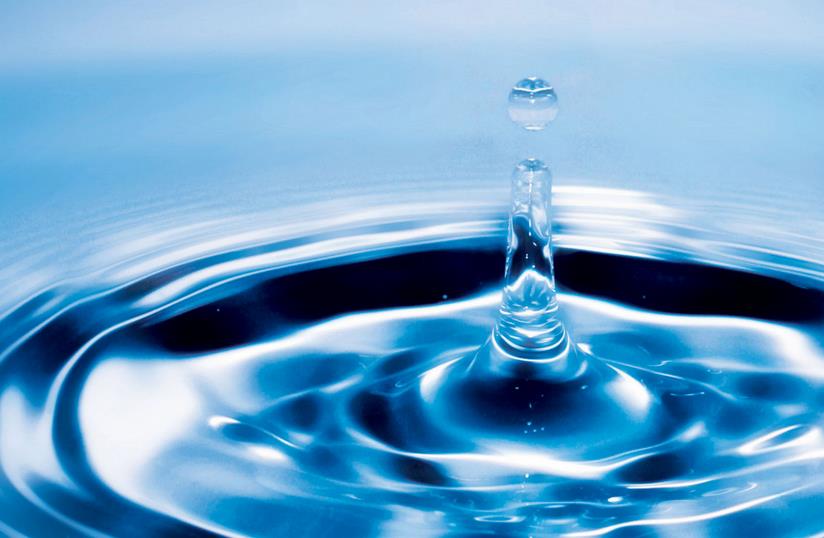Last month’s UK-India Economic and Financial Dialogue (EFD) deepened trade and economic ties between Britain and India’s infrastructure and financial services sectors. This year’s EFD, the eight round of their annual dialogue, aimed to boost mutual trade and investment between the two countries.
The UK's Treasury department released a series of agreements reached during the dialogue, which announced that the UK will support “the delivery of major infrastructure projects in India across key sectors including smart cities, renewable energy and railways, all of which are vital for India's future growth,” as
reported by business-standard.com.
Among the agreements, four of them involve water quality and treatment technology services provided by UK-based companies.
TWO BILLION PEOPLE LACK ACCESSS TO SAFE WATER
Wastewater management is linked inextricably with the desperate need to provide safe drinking water to unserved and underserved world populations.
There is mounting consensus that the world’s populations face a water crisis. It is estimated that global water consumption is doubling every twenty years; however, supply is not keeping up with demand.
A 2013 report by WHO and the United Nations Children’s Fund concluded that 768 million people still lack access to an improved source of water and two billion people do not have access to safe water. The number of people whose right to water is unsatisfied is even greater, probably in the order of 3.5 billion,
according to BCC Research analyst Susan Hanft. She reports that up to half of patients in hospitals around the world suffer from waterborne diseases such as malaria, cholera, schistosomiasis, and trachoma. Thousands of children perish each day as a result of water-related illness. Toxins in groundwater such as arsenic and fluoride are an emerging threat in some world regions.
Compounding the water problem is that agriculture consumes upward of 70% of the world’s water, while poor irrigation and livestock management practices waste huge amounts of the precious resource, observes Hanft. As an example, she says one ton of water (240 gallons) is required to produce one pound of bread or rice.
INDIA’S WATER MARKET
The water market has undergone considerable change in the last few years as India’s knowledge, skill, and availability of equipment have grown, Hanft says. There are 12 medium-sized companies that have recently expanded operations and won a number of projects. There are hundreds of small system integrators across the country that address local requirements, as well.
“Indigenous development of various treatment products such as ion exchange resins and RO membranes have reduced costs and made various technologies readily available on a mass-scale. Many major international players have also entered the market,” she notes.
India’s water and wastewater market has been growing at a compound annual growth rate of about 15% during the past 10 years, Hanft reports. The business is almost equally split between the government and the private sector.
“The industrial sector is growing at a faster rate than that of the municipal sector. However, municipal water treatment is gaining share since the use of disinfection systems such as UV, ozone, and electrochlorination are currently minimal in water treatment plants,” she states, adding that “treatment is also gradually shifting from chemical methods and demineralizers to membrane technology.”
THE FOUR AGREEMENTS
Dryden Aqua, a marine biological company specializing in water quality and treatment technology, will install their product in 5,000 rural community drinking water systems in India during 2016. The current project, valued at 500,000 pounds (about $714,00) in 2016, features technology designed to improve the availability of clean drinking water in these communities.
Del Agua will operate a water testing program for the state of West Bengal for one year. The 700,000-pound (about $1 billion) contract with the government of West Bengal aims to help safeguard the local population from water contaminants such as arsenic and fluoride.
Lovibond Tintometer will set up a factor and sales service operation in Hyderabad, an investment projected to total more 1 million pounds ($1.4 billion) over the first three years of implementation. A leading UK supplier of water analysis equipment, Tintometer endeavors to enhance the production of instruments and chemical reagents to meet the rapidly growing demand for high quality water testing products in India.
Pell Frischmann has won three major contracts in the Mumbai region. The multiple contracts will have the consultant engineering firm evaluating the detailed project report and bid process management of the Mumbai Coastal Road project, alongside two contracts for major waste water treatment works located in Mumbai suburbs.
GLOBAL MARKET FOR WATER AND WASTEWATER TREATMENT EQUIPMENT
Hanft estimates that the global market for water and wastewater treatment equipment is reportedly valued at $500 billion to $600 billion, a range that depends on “the source and what is included in the estimate.” Between $80 billion and $95 billon is related specifically to equipment, she says.
According to the United Nations’ Fifth World Water Development Report (2014), up to $148 billion will need to be invested worldwide in water supplies and wastewater services annually to 2025, Hanft remarks. She says that figure reflects chronic underinvestment in water infrastructure.
“This problem is manifest not only in the developing world, but also in advanced economies, which will need to make considerable investments in the coming years just to maintain services.”




